【数据结构刷题专题】—— 二叉树
二叉树
二叉树刷题框架

二叉树的定义:
struct TreeNode {int val;TreeNode* left;TreeNode* right;TreeNode(int x) : val(x), left(NULL), right(NULL);
};
1 二叉树的遍历方式
【1】前序遍历
class Solution {
public:void traversal(TreeNode* node, vector<int>& vec) {if (node == NULL) return;vec.push_back(node->val);traversal(node->left, vec);traversal(node->right, vec);}vector<int> preorderTraversal(TreeNode* root) {vector<int> result;traversal(root, result);return result;}
};
【2】后序遍历
class Solution {
public:void traversal(TreeNode* node, vector<int>& vec) {if (node == NULL) return;traversal(node->left, vec);traversal(node->right, vec);vec.push_back(node->val);}vector<int> postorderTraversal(TreeNode* root) {vector<int> result;traversal(root, result);return result;}
};
【3】中序遍历
class Solution {
public:void traversal(TreeNode* node, vector<int>& vec) {if (node == NULL) return;traversal(node->left, vec);vec.push_back(node->val);traversal(node->right, vec);}vector<int> inorderTraversal(TreeNode* root) {vector<int> result;traversal(root, result);return result;}
};
【4】层序遍历
class Solution {
public:vector<vector<int>> levelOrder(TreeNode* root) {vector<vector<int>> result;queue<TreeNode*> que;if (root != NULL) que.push(root);while (!que.empty()) {vector<int> vec;int size = que.size();for (int i = 0; i < size; i++) {TreeNode* node = que.front();que.pop();vec.push_back(node->val);if (node->left) que.push(node->left);if (node->right) que.push(node->right);}result.push_back(vec);}return result;}
};
2 二叉树的属性
【1】101. 对称二叉树
class Solution {
public:bool compare(TreeNode* left, TreeNode* right) {if (left != NULL && right == NULL) return false;else if (left == NULL && right != NULL) return false;else if (left == NULL && right == NULL) return true;else if (left->val != right->val) return false;bool outside = compare(left->left, right->right);bool inside = compare(left->right, right->left);return outside && inside;}bool isSymmetric(TreeNode* root) {if (root == NULL) return true;return compare(root->left, root->right);}
};
【2】104. 二叉树的最大深度
迭代法:
class Solution {
public:int maxDepth(TreeNode* root) {if (root == NULL) return 0;int depth = 0;queue<TreeNode*> que;que.push(root);while (!que.empty()) {int size = que.size();depth++;while (size--) {TreeNode* node = que.front();que.pop();if (node->left) que.push(node->left);if (node->right) que.push(node->right);}}return depth;}
};
递归法:
class Solution {
public:int getDepth(TreeNode* node) {if (node == NULL) return 0;int left = getDepth(node->left);int right = getDepth(node->right);return 1 + max(left, right);}int maxDepth(TreeNode* root) {return getDepth(root);}
};
【3】111.二叉树的最小深度
递归法:
class Solution {
public:int getDepth(TreeNode* node) {if (node == NULL) return 0;int left = getDepth(node->left);int right = getDepth(node->right);if (node->left != NULL && node->right == NULL) return 1 + left;if (node->left == NULL && node->right != NULL) return 1 + right;return 1 + min(left, right);}int minDepth(TreeNode* root) {return getDepth(root);}
};
迭代法:
class Solution {
public:int minDepth(TreeNode* root) {queue<TreeNode*> que;if (root == NULL) return 0;que.push(root);int depth = 0;while (!que.empty()) {int size = que.size();depth++;while (size--) {TreeNode* node = que.front();que.pop();if (node->left) que.push(node->left);if (node->right) que.push(node->right);if (node->left == NULL && node->right == NULL) return depth;}}return depth;}
};
【4】222. 完全二叉树的节点个数
递归法:
class Solution {
public:int getNum(TreeNode* node) {if (node == NULL) return 0;int left = getNum(node->left);int right = getNum(node->right);return 1 + left + right;}int countNodes(TreeNode* root) {return getNum(root);}
};
迭代法:
class Solution {
public:int countNodes(TreeNode* root) {queue<TreeNode*> que;if (root == NULL) return 0;que.push(root);int num = 0;while (!que.empty()) {int size = que.size();while (size--) {TreeNode* node = que.front();que.pop();num++;if (node->left) que.push(node->left);if (node->right) que.push(node->right);}}return num;}
};
【5】110. 平衡二叉树
class Solution {
public:int getHeight(TreeNode* node) {if (node == NULL) return 0;int left = getHeight(node->left);if (left == -1) return -1;int right = getHeight(node->right);if (right == -1) return -1;return abs(left - right) > 1 ? -1 : 1 + max(left, right);}bool isBalanced(TreeNode* root) {return getHeight(root) == -1 ? false : true;}
};
【6】257. 二叉树的所有路径
class Solution {
public:void traversal(TreeNode* node, string path, vector<string>& result) {path += to_string(node->val);if (node->left == NULL && node->right == NULL) {result.push_back(path);return;}if (node->left) traversal(node->left, path + "->", result);if (node->right) traversal(node->right, path + "->", result);}vector<string> binaryTreePaths(TreeNode* root) {vector<string> result;string path;if (root == NULL) return result;traversal(root, path, result);return result;}
};
【7】404. 左叶子之和
class Solution {
public:int sumOfLeftLeaves(TreeNode* root) {if (root == NULL) return 0;int left = sumOfLeftLeaves(root->left);if (root->left && root->left->left == NULL && root->left->right == NULL) {left = root->left->val;}int right = sumOfLeftLeaves(root->right);return left + right;}
};
【8】513. 找树左下角的值
迭代法:
class Solution {
public:int findBottomLeftValue(TreeNode* root) {queue<TreeNode*> que;que.push(root);int val = 0;while (!que.empty()) {int size = que.size();for (int i = 0; i < size; i++) {TreeNode* node = que.front();que.pop();if (i == 0) val = node->val;if (node->left) que.push(node->left);if (node->right) que.push(node->right);}}return val;}
};
【9】112. 路径总和
class Solution {
public:bool pathSum(TreeNode* node, int count) {if (node->left == NULL && node->right == NULL && count == 0) return true;if (node->left == NULL && node->right == NULL) return false;if (node->left) {count -= node->left->val;if (pathSum(node->left, count)) return true;count += node->left->val;}if (node->right) {count -= node->right->val;if (pathSum(node->right, count)) return true;count += node->right->val;}return false;}bool hasPathSum(TreeNode* root, int targetSum) {if (root == NULL) return false;return pathSum(root, targetSum - root->val);}
};
【10】543. 二叉树的直径
class Solution {
public:int ans;int Depth(TreeNode* node) {if (node == NULL) return 0;int left = Depth(node->left);int right = Depth(node->right);ans = max(ans, 1 + left + right);return 1 + max(left, right);}int diameterOfBinaryTree(TreeNode* root) {ans = 1;Depth(root);return ans - 1;}
};
【11】124. 二叉树中的最大路径和
class Solution {
public:int ans = INT_MIN;int dfs(TreeNode* node) {if (node == NULL) return 0;ans = max(ans, node->val);int lSum = dfs(node->left);int rSum = dfs(node->right);lSum = max(0, lSum); rSum = max(0, rSum);ans = max(ans, node->val + lSum + rSum);return max(node->val + lSum, node->val + rSum);}int maxPathSum(TreeNode* root) {ans = max(ans, dfs(root));return ans;}
};
3 二叉树的修改和构造
【1】226. 翻转二叉树
class Solution {
public:TreeNode* invertTree(TreeNode* root) {if (root == NULL) return root;swap(root->left, root->right);if (root->left) invertTree(root->left);if (root->right) invertTree(root->right);return root;}
};
【2】106. 从中序与后序遍历序列构造二叉树
class Solution {
public:TreeNode* traversal(vector<int>& inorder, vector<int>& postorder) {if (postorder.size() == 0) return NULL;int rootValue = postorder[postorder.size() - 1];TreeNode* root = new TreeNode(rootValue);if (postorder.size() == 1) return root;int qiege;for (qiege = 0; qiege <= inorder.size(); qiege++) {if (inorder[qiege] == root->val) break;}vector<int> leftInorder(inorder.begin(), inorder.begin() + qiege);vector<int> rightInorder(inorder.begin() + qiege + 1, inorder.end());postorder.resize(postorder.size() - 1);vector<int> leftPostorder(postorder.begin(), postorder.begin() + leftInorder.size());vector<int> rightPostorder(postorder.begin() + leftInorder.size(), postorder.end());root->left = traversal(leftInorder, leftPostorder);root->right = traversal(rightInorder, rightPostorder);return root;}TreeNode* buildTree(vector<int>& inorder, vector<int>& postorder) {if (inorder.size() == 0 || postorder.size() == 0) return NULL;return traversal(inorder, postorder);}
};
【3】654. 最大二叉树
构造树一般采用的是前序遍历
class Solution {
public:TreeNode* traversal(vector<int>& nums, int left, int right) {if (left >= right) return NULL;int index = left;for (int i = left + 1; i < right; i++) {if (nums[i] > nums[index]) index = i;}TreeNode* root = new TreeNode(nums[index]);root->left = traversal(nums, left, index);root->right = traversal(nums, index + 1, right);return root;}TreeNode* constructMaximumBinaryTree(vector<int>& nums) {return traversal(nums, 0, nums.size());}
};
【4】617. 合并二叉树
class Solution {
public:TreeNode* mergeTrees(TreeNode* root1, TreeNode* root2) {if (root1 == NULL) return root2;if (root2 == NULL) return root1;root1->val += root2->val;root1->left = mergeTrees(root1->left, root2->left);root1->right = mergeTrees(root1->right, root2->right);return root1;}
};
【5】114. 二叉树展开为链表
class Solution {
public:void traversal(TreeNode* node) {if (node == NULL) return;traversal(node->left);traversal(node->right);TreeNode* left = node->left;TreeNode* right = node->right;node->left = NULL;node->right = left;while (node->right) node = node->right;node->right = right;return;}void flatten(TreeNode* root) {traversal(root);return;}
};
4 求二叉树的属性
【1】700. 二叉搜索树中的搜索
class Solution {
public:TreeNode* searchBST(TreeNode* root, int val) {while (root != NULL) {if (root->val > val) {root = root->left;} else if (root->val < val) {root = root->right;} else return root;}return root;}
};
【2】98. 验证二叉搜索树
class Solution {
public:long long maxVel = LONG_MIN;bool isValidBST(TreeNode* root) {if (root == NULL) return true;bool left = isValidBST(root->left);if (root->val > maxVel) maxVel = root->val;else return false;bool right = isValidBST(root->right);return left && right;}
};
【3】530. 二叉搜索树的最小绝对差
遇到在二叉搜索树上求什么最值啊,差值之类的,就把它想成在一个有序数组上求最值,求差值
把二叉搜索树转换成有序数组,然后遍历一遍数组,就统计出来最小差值
class Solution {
public:vector<int> vec;int ans = INT_MAX;void traversal(TreeNode* node) {if (node == NULL) return;traversal(node->left);vec.push_back(node->val);traversal(node->right);}int getMinimumDifference(TreeNode* root) {traversal(root);for (int i = 1; i < vec.size(); i++) {ans = min(ans, vec[i] - vec[i - 1]);}return ans;}
};
在递归中记录前一个节点的指针
class Solution {
public:int result = INT_MAX;TreeNode* pre = NULL;void traversal(TreeNode* node) {if (node == NULL) return;traversal(node->left);if (pre != NULL) result = min(result, node->val - pre->val);pre = node;traversal(node->right);}int getMinimumDifference(TreeNode* root) {traversal(root);return result;}
};
【4】501. 二叉搜索树中的众数
class Solution {
public:void traversal(TreeNode* cur, unordered_map<int, int>& map) {if (cur == NULL) return;map[cur->val]++;traversal(cur->left, map);traversal(cur->right, map);return;}static bool cmp(const pair<int, int>& a, const pair<int, int>& b) {return a.second > b.second;}vector<int> findMode(TreeNode* root) {unordered_map<int, int> map;vector<int> result;if (root == NULL) return result;traversal(root, map);vector<pair<int, int>> vec(map.begin(), map.end());sort(vec.begin(), vec.end(), cmp);result.push_back(vec[0].first);for (int i = 1; i < vec.size(); i++) {if (vec[0].second == vec[i].second) result.push_back(vec[i].first);else break;}return result;}
};
【5】把二叉搜索树转换为累加树
class Solution {
public:int pre = 0;void traversal(TreeNode* node) {if (node == NULL) return;traversal(node->right);node->val += pre;pre = node->val;traversal(node->left);}TreeNode* convertBST(TreeNode* root) {if (root == NULL) return root;traversal(root);return root;}
};
【6】230. 二叉搜索树中第K小的元素
class Solution {
public:int maxVel = INT_MIN;vector<int> vec;void traversal(TreeNode* node) {if (node == NULL) return;traversal(node->left);if (node->val > maxVel) {vec.push_back(node->val);maxVel = node->val;}traversal(node->right);return;}int kthSmallest(TreeNode* root, int k) {traversal(root);return vec[k - 1];}
};
【7】二叉树的右视图
class Solution {
public:vector<int> rightSideView(TreeNode* root) {vector<int> result;queue<TreeNode*> que;if (root == NULL) return result;que.push(root);while (!que.empty()) {int size = que.size();for (int i = 0; i < size; i++) {TreeNode* node = que.front();que.pop();if (i == (size - 1)) result.push_back(node->val);if (node->left) que.push(node->left);if (node->right) que.push(node->right);}}return result;}
};
5 二叉树的公共祖先问题
【1】236. 二叉树的最近公共祖先
class Solution {
public:TreeNode* lowestCommonAncestor(TreeNode* root, TreeNode* p, TreeNode* q) {if (root == p || root == q || root == NULL) return root;TreeNode* left = lowestCommonAncestor(root->left, p, q);TreeNode* right = lowestCommonAncestor(root->right, p, q);if (left != NULL && right != NULL) return root;if (left != NULL && right == NULL) return left;else if (left == NULL && right != NULL) return right;else return NULL;}
};
【2】235. 二叉搜索树的最近公共祖先
class Solution {
public:TreeNode* lowestCommonAncestor(TreeNode* root, TreeNode* p, TreeNode* q) {while (root) {if (root->val > q->val && root->val > p->val) root = root->left;else if (root->val < q->val && root->val < p->val) root = root->right;else return root;}return NULL;}
};
6 二叉搜索树的修改和构造
【1】二叉搜索树的插入操作
class Solution {
public:TreeNode* insertIntoBST(TreeNode* root, int val) {if (root == NULL) {TreeNode* node = new TreeNode(val);return node;}if (root->val > val) root->left = insertIntoBST(root->left, val);if (root->val < val) root->right = insertIntoBST(root->right, val);return root;}
};
【2】450. 删除二叉搜索树中的节点
class Solution {
public:TreeNode* deleteNode(TreeNode* root, int key) {if (root == NULL) return root;if (root->val == key) {if (root->left == NULL && root->right == NULL) {delete root;return NULL;} else if (root->left == NULL) {auto tmp = root->right;delete root;return tmp;} else if (root->right == NULL) {auto tmp = root->left;delete root;return tmp;} else {TreeNode* cur = root->right;while (cur->left != NULL) {cur = cur->left;}cur->left = root->left;TreeNode* tmp = root;root = root->right;delete tmp;return root;}}if (root->val > key) root->left = deleteNode(root->left, key);if (root->val < key) root->right = deleteNode(root->right, key);return root;}
};
【3】669. 修剪二叉搜索树
class Solution {
public:TreeNode* trimBST(TreeNode* root, int low, int high) {if (root == NULL) return root;if (root->val < low) return trimBST(root->right, low, high);if (root->val > high) return trimBST(root->left, low, high);root->left = trimBST(root->left, low, high);root->right = trimBST(root->right, low, high);return root;}
};
【4】108. 将有序数组转换为二叉搜索树
class Solution {
public:TreeNode* traversal(vector<int>& nums, int left, int right) {if (left > right) return NULL;int mid = left + (right - left) / 2;TreeNode* root = new TreeNode(nums[mid]);root->left = traversal(nums, left, mid - 1);root->right = traversal(nums, mid + 1, right);return root;}TreeNode* sortedArrayToBST(vector<int>& nums) {return traversal(nums, 0, nums.size() - 1);}
};
二叉树刷题专题到此结束,读者对题目有更好的解答欢迎讨论。
相关文章:

【数据结构刷题专题】—— 二叉树
二叉树 二叉树刷题框架 二叉树的定义: struct TreeNode {int val;TreeNode* left;TreeNode* right;TreeNode(int x) : val(x), left(NULL), right(NULL); };1 二叉树的遍历方式 【1】前序遍历 class Solution { public:void traversal(TreeNode* node, vector&…...

基于AWS云服务构建智能家居系统的最佳实践
在当今智能家居时代,构建一个安全、高性能、可扩展和灵活的智能家居系统已经成为许多公司的目标。亚马逊网络服务(AWS)提供了一系列云服务,可以帮助企业轻松构建和管理智能家居系统。本文将探讨如何利用AWS云服务构建一个智能家居系统,并分享相关的最佳实践。 系统架构概述 该…...

Java零基础-集合:Set接口
哈喽,各位小伙伴们,你们好呀,我是喵手。 今天我要给大家分享一些自己日常学习到的一些知识点,并以文字的形式跟大家一起交流,互相学习,一个人虽可以走的更快,但一群人可以走的更远。 我是一名后…...

数据结构与算法-排序算法
1.顺序查找 def linear_search(iters, val):for i, v in enumerate(iters):if v val:return ireturn 2.二分查找 # 升序的二分查找 def binary_search(iters, val):left 0right len(iters)-1while left < right:mid (left right) // 2if iters[mid] val:return mid…...

SpringBoot 文件上传(三)
之前讲解了如何接收文件以及如何保存到服务端的本地磁盘中: SpringBoot 文件上传(一)-CSDN博客 SpringBoot 文件上传(二)-CSDN博客 这节讲解如何利用阿里云提供的OSS(Object Storage Service)对象存储服务保存文件。…...

web渗透测试漏洞流程:红队目标信息收集之资产搜索引擎收集
web渗透测试漏洞流程 渗透测试信息收集---域名信息收集1.域名信息的科普1.1 域名的概念1.2 后缀分类1.3 多重域名的关系1.4 域名收集的作用1.5 DNS解析原理1.6 域名解析记录2. 域名信息的收集的方法2.1 基础方法-搜索引擎语法2.1.1 Google搜索引擎2.1.1.1 Google语法的基本使用…...

UI自动化_id 元素定位
## 导包selenium from selenium import webdriver import time1、创建浏览器驱动对象 driver webdriver.Chrome() 2、打开测试网站 driver.get("你公司的平台地址") 3、使浏览器窗口最大化 driver.maximize_window() 4、在用户名输入框中输入admin driver.find_ele…...

华为OD技术面算法题整理
LeetCode原题 简单 题目编号频次409. 最长回文串 - 力扣(LeetCode)3...

vmware虚拟机下ubuntu扩大磁盘容量
1、扩容: 可以直接在ubuntu setting界面里直接扩容,也可通过vmware命令,如下: vmware提供一个命令行工具,vmware-vdiskmanager.exe,位于vmware的安装目录下,比如 C:/Program Files/VMware/VMwar…...

秋招打卡算法题第一天
一年多没有刷过算法题了,已经不打算找计算机类工作了,但是思来想去,还是继续找吧。 1. 字符串最后一个单词的长度 public static void main(String[] args) {Scanner in new Scanner(System.in);while(in.hasNextInt()){String itemin.nextL…...

BC98 序列中删除指定数字
题目 描述 有一个整数序列(可能有重复的整数),现删除指定的某一个整数,输出删除指定数字之后的序列,序列中未被删除数字的前后位置没有发生改变。 数据范围:序列长度和序列中的值都满足 1≤�≤…...

基于Java的学生体质健康管理系统的设计与实现(论文+源码)_kaic
摘 要 随着时代的进步,信息化也在逐渐深入融进我们生活的方方面面。其中也给健康管理带来了新的发展方向。通过对学生体质健康管理的研究与分析发现当下的管理系统还不够全面,系统的性能达不到使用者的要求。因此,本文结合Java的优势和流行性…...

【Linux系统】冯诺依曼与操作系统
什么是冯诺依曼体系结构? 如图即为冯诺依曼大致的体系结构图, 我们知道这些都是由我们的计算机硬件组成 输入设备:键盘, 鼠标, 摄像头, 话筒, 磁盘, 网卡... 输出设备:…...
——form表单的新增特性/h5的新特性)
前端理论总结(html5)——form表单的新增特性/h5的新特性
form表单的新增特性 range:范围 color:取色器 url:对url进行验证 tel:对手机号格式验证 email:对邮箱格式验证 novalidate :提交表单时不验证 form 或 input 域 numbe…...

基于TensorFlow的花卉识别(算能杯)%%%
Anaconda Prompt 激活 TensorFlow CPU版本 conda activate tensorflow_cpu //配合PyCharm环境 直接使用TensorFlow1.数据分析 此次设计的主题为花卉识别,数据为TensorFlow的官方数据集flower_photos,包括5种花卉(雏菊、蒲公英、玫瑰、向日葵…...

Android实现一周时间早中晚排班表
我们要做一个可以动态添加,修改一周早中晚时间排班表,需求图如下: one two 过程具体在这里不描述了,具体查看,https://github.com/yangxiansheng123/WorkingSchedule 上传数据格式: {"friday_plan":"…...

【Java八股面试系列】中间件-Redis
目录 Redis 什么是Redis Redis解决了什么问题 Redis的实现原理 数据结构 String 常用命令 应用场景 List(列表) 常用命令 应用场景 Hash(哈希) 常用命令 应用场景 set(集合) 常见命令编辑 应用场景 Sorted Set(有序集合) 常见命令编辑 应用场景 数据持…...

目前国内体验最佳的AI问答助手:kimi.ai
文章目录 简介图片理解长文档解析 简介 kimi.ai是国内初创AI公司月之暗面推出的一款AI助手,终于不再是四字成语拼凑出来的了。这是一个非常存粹的文本分析和对话工具,没有那些东拼西凑花里胡哨的AIGC功能,实测表明,这种聚焦是对的…...

Visual Studio项目编译和运行依赖第三方库的项目
1.创建项目,这里创建的项目是依赖于.sln的项目,非CMake项目 2.添加第三方库依赖的头文件和库文件路劲 3.添加第三方依赖库文件 4.项目配置有2个,一个是Debug,一个是Release,如果你只配置了Debug,编译和运行…...

Rust 语言中 Vec 的元素的删除方法
在 Rust 中,Vec(向量)提供了多种删除元素的方法。以下是一些常用的删除方法: remove: 这是最常用的删除方法,它接受一个索引作为参数,并移除该索引处的元素,同时返回被移除的元素。所有后面的元…...
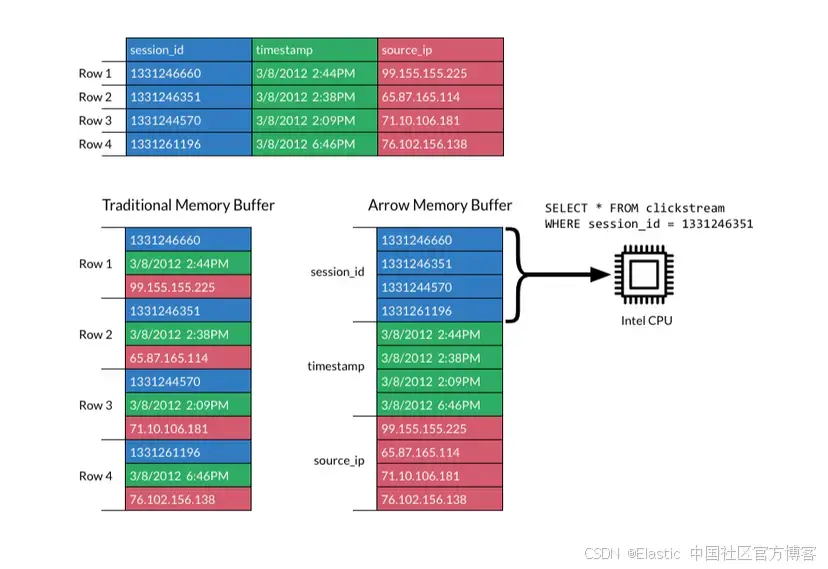
JavaScript 中的 ES|QL:利用 Apache Arrow 工具
作者:来自 Elastic Jeffrey Rengifo 学习如何将 ES|QL 与 JavaScript 的 Apache Arrow 客户端工具一起使用。 想获得 Elastic 认证吗?了解下一期 Elasticsearch Engineer 培训的时间吧! Elasticsearch 拥有众多新功能,助你为自己…...

Admin.Net中的消息通信SignalR解释
定义集线器接口 IOnlineUserHub public interface IOnlineUserHub {/// 在线用户列表Task OnlineUserList(OnlineUserList context);/// 强制下线Task ForceOffline(object context);/// 发布站内消息Task PublicNotice(SysNotice context);/// 接收消息Task ReceiveMessage(…...

Oracle查询表空间大小
1 查询数据库中所有的表空间以及表空间所占空间的大小 SELECTtablespace_name,sum( bytes ) / 1024 / 1024 FROMdba_data_files GROUP BYtablespace_name; 2 Oracle查询表空间大小及每个表所占空间的大小 SELECTtablespace_name,file_id,file_name,round( bytes / ( 1024 …...

ssc377d修改flash分区大小
1、flash的分区默认分配16M、 / # df -h Filesystem Size Used Available Use% Mounted on /dev/root 1.9M 1.9M 0 100% / /dev/mtdblock4 3.0M...
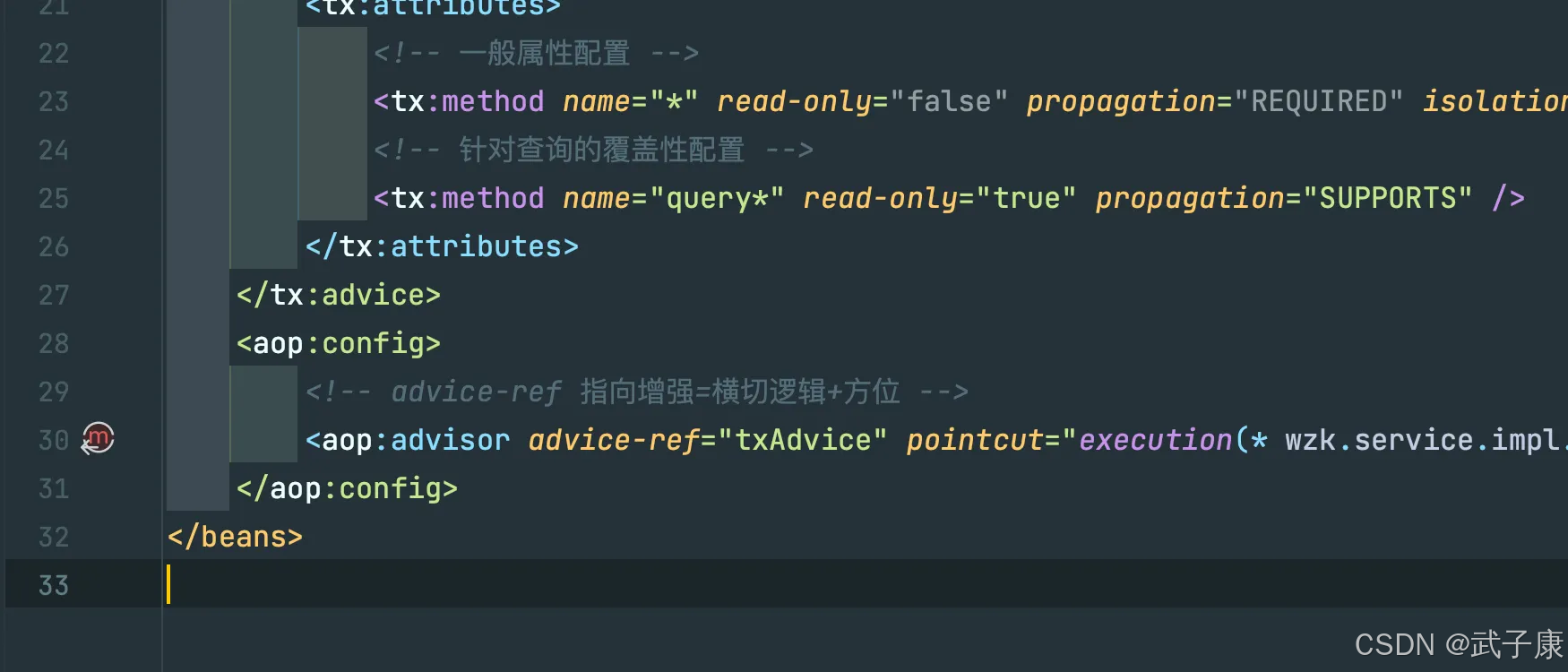
Java-41 深入浅出 Spring - 声明式事务的支持 事务配置 XML模式 XML+注解模式
点一下关注吧!!!非常感谢!!持续更新!!! 🚀 AI篇持续更新中!(长期更新) 目前2025年06月05日更新到: AI炼丹日志-28 - Aud…...
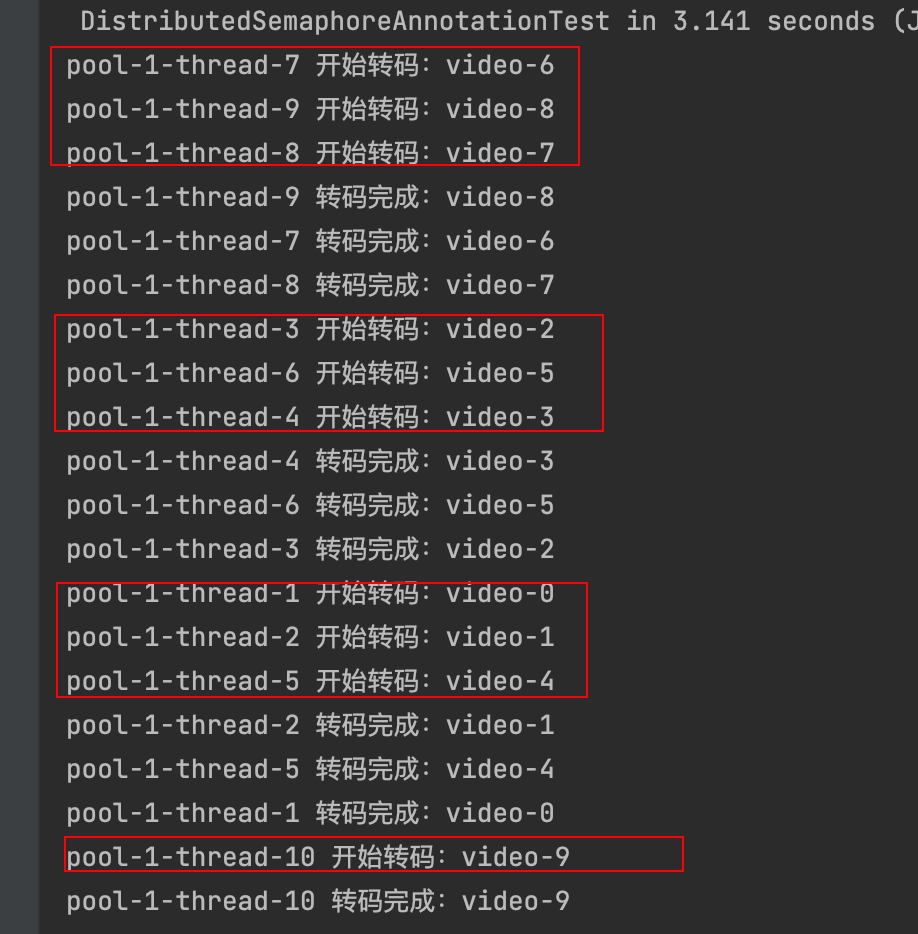
令牌桶 滑动窗口->限流 分布式信号量->限并发的原理 lua脚本分析介绍
文章目录 前言限流限制并发的实际理解限流令牌桶代码实现结果分析令牌桶lua的模拟实现原理总结: 滑动窗口代码实现结果分析lua脚本原理解析 限并发分布式信号量代码实现结果分析lua脚本实现原理 双注解去实现限流 并发结果分析: 实际业务去理解体会统一注…...

Spring AI 入门:Java 开发者的生成式 AI 实践之路
一、Spring AI 简介 在人工智能技术快速迭代的今天,Spring AI 作为 Spring 生态系统的新生力量,正在成为 Java 开发者拥抱生成式 AI 的最佳选择。该框架通过模块化设计实现了与主流 AI 服务(如 OpenAI、Anthropic)的无缝对接&…...
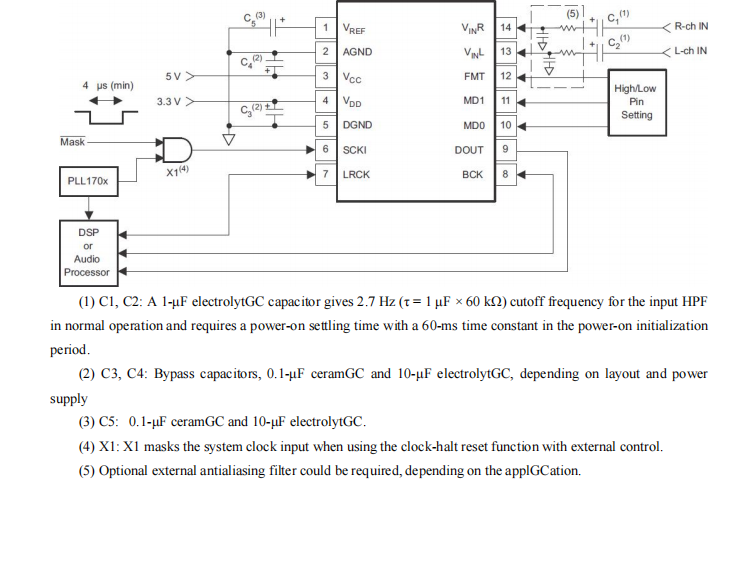
GC1808高性能24位立体声音频ADC芯片解析
1. 芯片概述 GC1808是一款24位立体声音频模数转换器(ADC),支持8kHz~96kHz采样率,集成Δ-Σ调制器、数字抗混叠滤波器和高通滤波器,适用于高保真音频采集场景。 2. 核心特性 高精度:24位分辨率,…...

HarmonyOS运动开发:如何用mpchart绘制运动配速图表
##鸿蒙核心技术##运动开发##Sensor Service Kit(传感器服务)# 前言 在运动类应用中,运动数据的可视化是提升用户体验的重要环节。通过直观的图表展示运动过程中的关键数据,如配速、距离、卡路里消耗等,用户可以更清晰…...
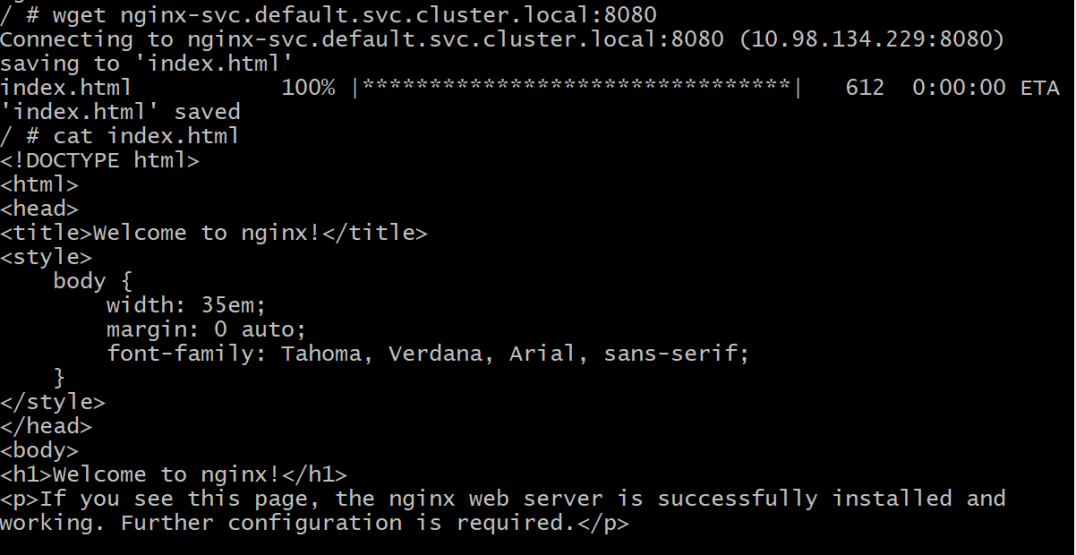
初探Service服务发现机制
1.Service简介 Service是将运行在一组Pod上的应用程序发布为网络服务的抽象方法。 主要功能:服务发现和负载均衡。 Service类型的包括ClusterIP类型、NodePort类型、LoadBalancer类型、ExternalName类型 2.Endpoints简介 Endpoints是一种Kubernetes资源…...
